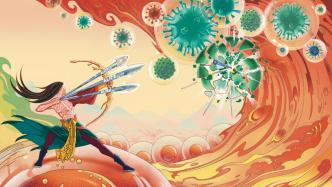
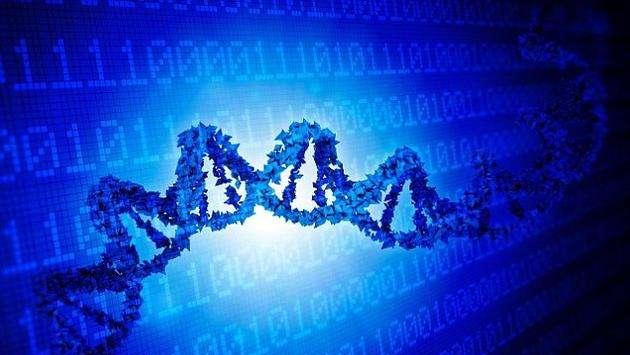
Eight years ago, in 2014, Wang Yidan enrolled in East China Normal University. She "programs" the cells.
She did not expect that, after 8 years of continuous efforts for the same research topic, from master student to doctoral student to the third year of postdoctoral fellow, she finally designed the first artificially synthesized antiviral system and successfully tested it. It took two years to submit the manuscript, and the paper was finally published.
Recently, related papers were published online in the internationally renowned journal Nature Communications. Wang Yidan should be the first author of the paper. The name of the anti-virus system ALICE (Alice) has the same name as the heroine in the movie "Resident Evil". The system successfully mimics the body's antiviral immune system, she said.
But since the human body already has an antiviral immune system, why artificially synthesize one?
People with compromised immune systems were at greater risk of complications and death when faced with viral diseases, the paper said. Moreover, the development of broad-spectrum antiviral drugs is an important measure to prevent pandemics.
The corresponding authors of the above papers are Ye Haifeng, a researcher at East China Normal University, and Wang Linfa, a professor at the Duke-National University of Singapore School of Medicine, a member of the American Academy of Microbiology, and a member of the Australian Academy of Technical Sciences and Engineering.
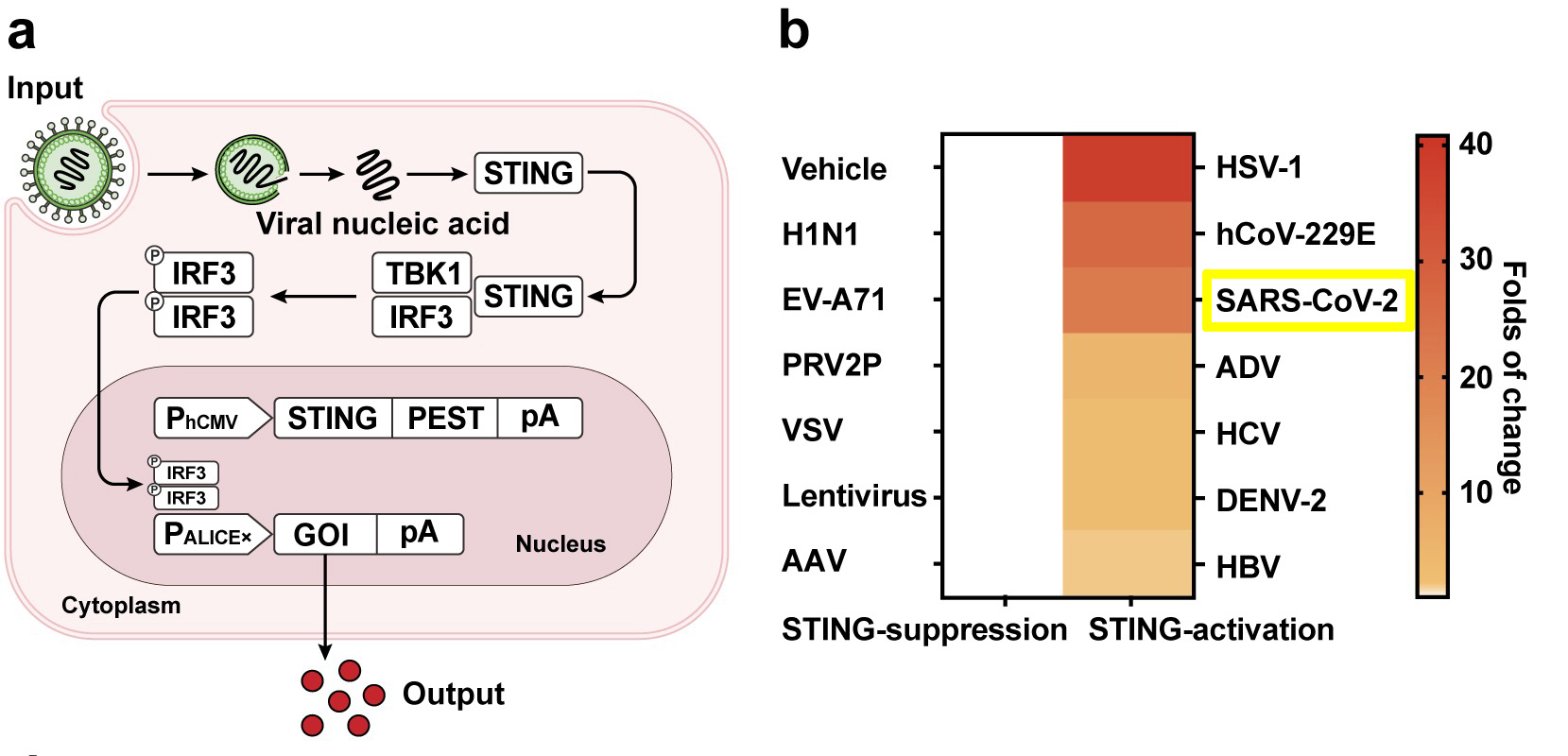
The schematic design diagram of the ALICEsen system (a), and the system's response to 13 viruses including the new coronavirus (SARS-CoV-2) (b).
On December 15, Ye Haifeng told The Paper (www.thepaper.cn) that the ALICE system can be regarded as a new type of broad-spectrum anti-viral intelligent living "drug", or an artificial immune system like an intelligent robot. It can automatically monitor and sense, and when a virus comes, it can be automatically activated to output anti-viral proteins to remove the virus. It is an enhanced version of the "two-in-one" or even "three-in-one" immune system, which integrates the anti-virus "weapons" in human cells and bacteria; more importantly, it is an intelligent closed-loop design, when there are viruses, it will Start to clear, "silent" when there is no virus, "no one has ever integrated like this". It contains virus sensors, multiple anti-virus output modules and other modules, which can be flexibly adjusted and updated iteratively.
Enhanced version, multiple anti-virus systems: closed loop is more intelligent
"The virus is so small, why is it so harmful?"
Wang Yidan said that when she was in college, she was particularly interested in virology research. When she was a graduate student, she wanted to be admitted to the Wuhan Institute of Virology, Chinese Academy of Sciences, but failed. She then studied for a master's degree at East China Normal University. After learning about her research interests, her tutor, Ye Haifeng, began to advise, guide and support her on the subject of artificially synthesized antiviral systems. "Ms. Ye's ideas are very advanced, and it was still in 2014."
In the routine anti-virus process, the human immune system will produce interferon and other "weapons" after discovering the virus to suppress or clear the virus. But such a process can take days or even a week or two to complete. Sometimes distant water cannot quench near thirst.
In addition, in clinical treatment or in the process of epidemic prevention, people often detect the virus first, and then take targeted drugs or design vaccines, which has certain lags and limitations.
The newly released ALICE system integrates the "virus sensor" for detecting viruses and multiple "weapons" for fighting viruses. Once a virus is "detected", it will start the removal process, shorten the reaction time, and start responding within hours. Moreover, the system responds according to the dose of the virus. When there are more viruses, more antiviral proteins are produced; after the viruses are cleared, the system is "quiet".
Ye Haifeng said that such an anti-virus system is closed-loop, self-feedback and self-regulating, and more "automatic and intelligent".
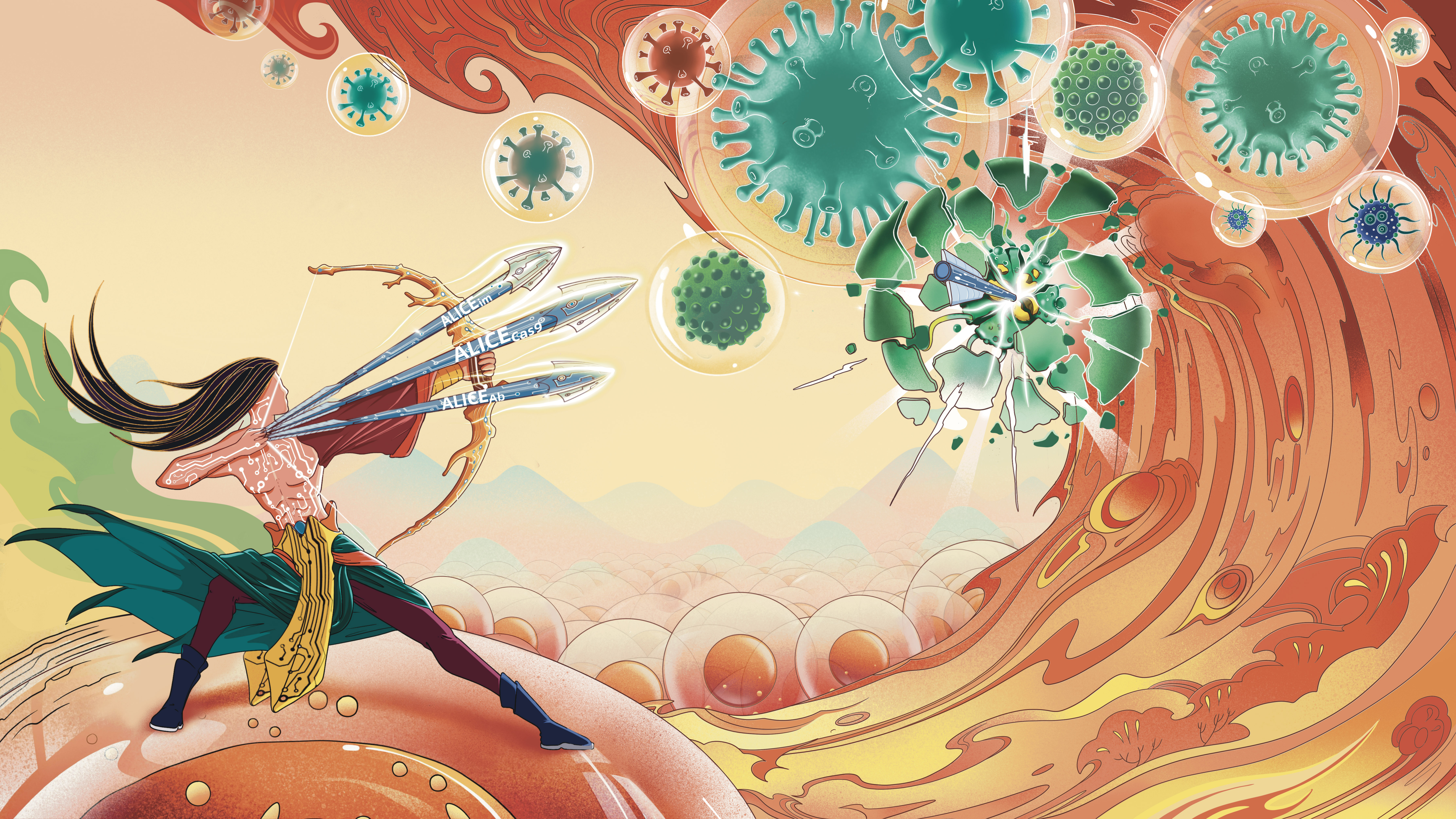
Schematic diagram: The research team compared the working principle of the ALICE system with the allusion of "Hou Yi shooting the sun". Among them, the chassis cells loaded with the ALICE gene circuit are compared to Hou Yi, and different types of anti-virus functional proteins are compared to its weapon arrows. Hou Yi precisely manipulated the bow and arrow to crush the virus.
Hydrogel-encapsulated cell transplantation experiments showed that in mice, the ALICE system can automatically sense and inhibit the virus no matter in the early, middle or late stages of virus infection. It is particularly worth noting that the neutralizing antibody output module carried by the ALICE system can be automatically exported six hours after virus infection, at least one week earlier than the body's adaptive immune system produces neutralizing antibodies.
The paper shows that the ALICE system contains multiple antiviral functional modules: the genes of human antiviral cytokines interferon IFN-α and IFN-β, the gene of Cas9 protein from bacteria that can degrade viral nucleic acids, and the secretion of human Genes for neutralizing antibodies.
The "viral sensor" of the system is the "naturally" existing adapter protein STING protein in human cells. When the protein "encounters" viral nucleic acid in the cell, it transmits a signal into the cell signaling network.
The ALICE system can be delivered to the experimental subjects in two ways: one is gene therapy, using gene therapy vectors for delivery; the other is cell therapy, reprogramming the above system in cells, and then transplanting the cells into in the test subject.
The results of the cornea experiment of the ALICE system delivered by the adeno-associated virus (AAV) vector to the mouse model of herpetic keratitis (HSK) showed that the viral load in the cornea, trigeminal ganglion and brain of the experimental mice was inhibited; and the face The iterative infection of the virus can also exert a good antiviral effect.
According to the researchers, for the herpetic keratitis caused by the herpes virus HSV-1, at present, the common method for clinical treatment of HSV-1 is antiviral drugs, such as nucleoside analogs such as acyclovir (ACV). The single target can easily lead to the emergence of drug-resistant strains. The emergence of the ALICE system provides a flexible, innovative, and modular new strategy for antiviral treatment.
Submitted for two years: tested 13 viruses, including the new coronavirus
Wang Yidan told The Paper that although she was very interested in virology research, she "really gave up on the research on artificial antiviral systems and didn't want to do it." "In the first two years (starting the research), we even had great difficulties in culturing the virus."
Wang Yidan said that during her combined master's and doctoral studies, her supervisor Ye Haifeng gave her the greatest degree of freedom and inclusiveness in scientific research. In addition to free exploration in the fields she was interested in, she also suggested that she carry out other topics at the same time, so that her Ph.D. The dissertation defense was successfully passed.
This year is her third year as a postdoctoral fellow in Ye Haifeng's project, and she is about to leave the station.
The paper submission process is also full of twists and turns.
In 2020, they contributed for the first time. "After two rounds of review, two rounds of supplementary experiments, and two rounds of revisions to the article, the reviewers finally "rebelled", thinking that our system still cannot solve clinical problems, such as the clinical problems of new coronary pneumonia .” Ye Haifeng revealed. One of the core contributions of the paper is a conceptual breakthrough, he said. Traditional virology research may not have thought of using the idea of synthetic biology to integrate virus sensors and therapeutic output modules to form a closed-loop sensor system, which is equivalent to an artificial immune sensing system. "This kind of thinking, this kind of concept, I think is the most innovative." The current experimental results show the potential of application, but it is difficult to directly solve clinical problems through just one paper.
They then transferred to the journal Nature Communications. The entire submission process will take up to 2 years until the paper is officially published online on December 9, 2022.
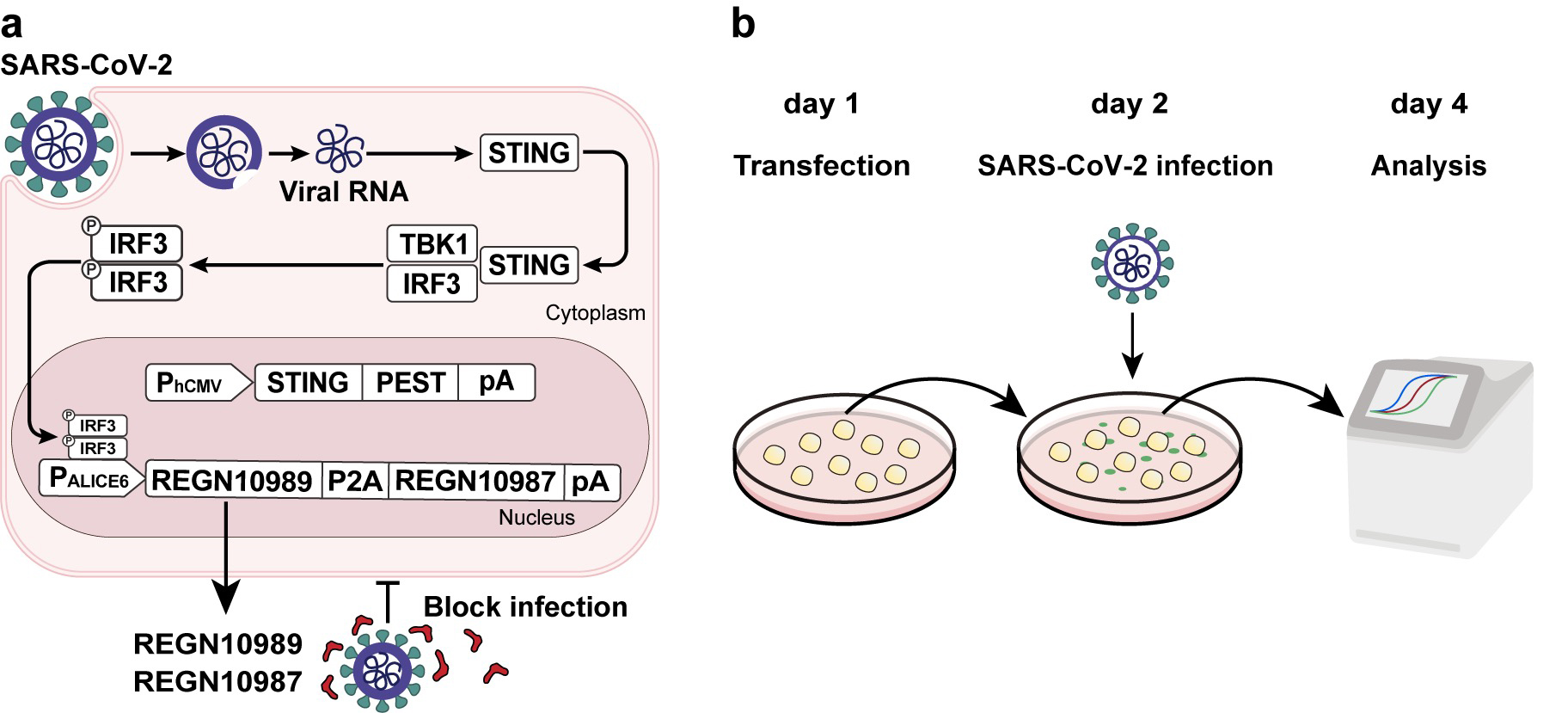
Cell experiments show that the ALICE system can recognize the new coronavirus and reduce its copy number.
Wang Yidan introduced that in the paper, they tested a total of 5 cell lines, and also tested 13 viruses such as dengue virus (DENV-2) and hepatitis B virus, including the new coronavirus (SARS-CoV-2).
The paper shows that the new coronavirus can also activate the ALICE system. The results of the HEK-293T cell experiment showed that compared with the control group, the load of the new coronavirus in the cells transfected with the ALICE system containing neutralizing antibodies REGN10989 and REGN10987 was 70.3% (±4.3%) lower. In the future , the ALICE system can be upgraded with newly discovered neutralizing antibodies.
Ye Haifeng said that the above-mentioned experiments on the new coronavirus are only cell experiments, and no clinical trials have been conducted. Its clinical application still needs further research. The cell experiment of the above-mentioned new coronavirus was carried out in the P4 laboratory (biosafety level 4 laboratory) of the Wuhan Institute of Virology, Chinese Academy of Sciences, a cooperative unit.
Ye Haifeng said, "We have data. This system can identify the new crown (virus), and the new crown virus can activate the ALICE system."
He said that in the conceptual design of clinical application, take the anti-new crown as an example, because the new crown virus mainly infects the respiratory tract, and through gene therapy, the ALICE system is sprayed into the nasal cavity to enter its epidermal cells. When the new coronavirus is inhaled, the ALICE system in the epidermal cells of the nasal cavity is activated to quickly output neutralizing antibodies to prevent subsequent further infection of the new coronavirus.
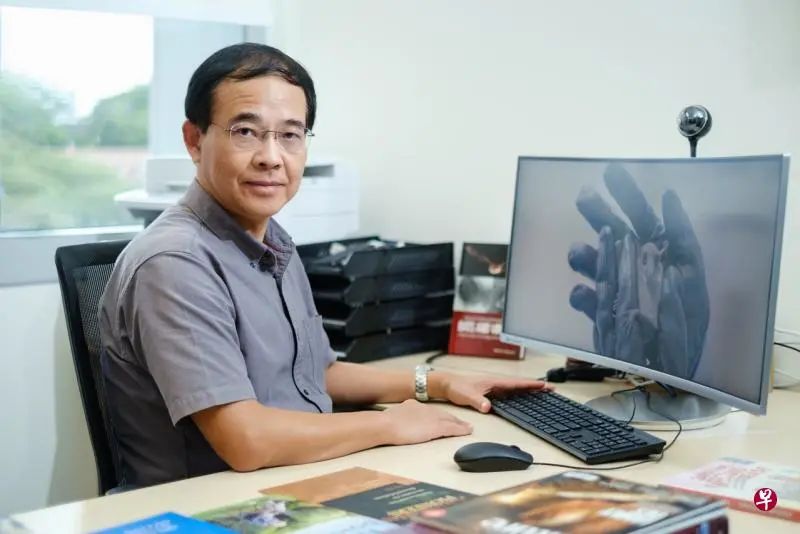
Wang Linfa, a famous virologist, alumnus of East China Normal University, professor of Duke-NUS Medical School, academician of American Academy of Microbiology, and academician of Australian Academy of Technical Science and Engineering. Provided by School of Life Sciences, East China Normal University
People programmed in cells: "Look at problems from the perspective of all mankind"
"He told me that you must look at problems from the perspective of all mankind. His words have always inspired me."
"This is the way to do scientific research. You have to actually solve the problem."
These two sentences specifically mentioned by Wang Yidan come from Wang Linfa, a famous virologist, an alumnus of East China Normal University, a professor of Duke-NUS Medical School, a member of the American Academy of Microbiology, and a member of the Australian Academy of Technical Sciences and Engineering. In 2018, he returned to East China Normal University to give lectures, and began to give guidance to Wang Yidan's research on the ALICE system.
Ye Haifeng said, "Originally we only wanted to use Cas9 nuclease to degrade the nucleic acid of the virus. Teacher Wang Linfa gave us a suggestion, saying that you can try neutralizing antibodies to quickly express a protein, and direct neutralization is also better. Later We also exported both Cas9 and neutralizing antibodies, and then later we also exported interferon, which opened up our thinking.”
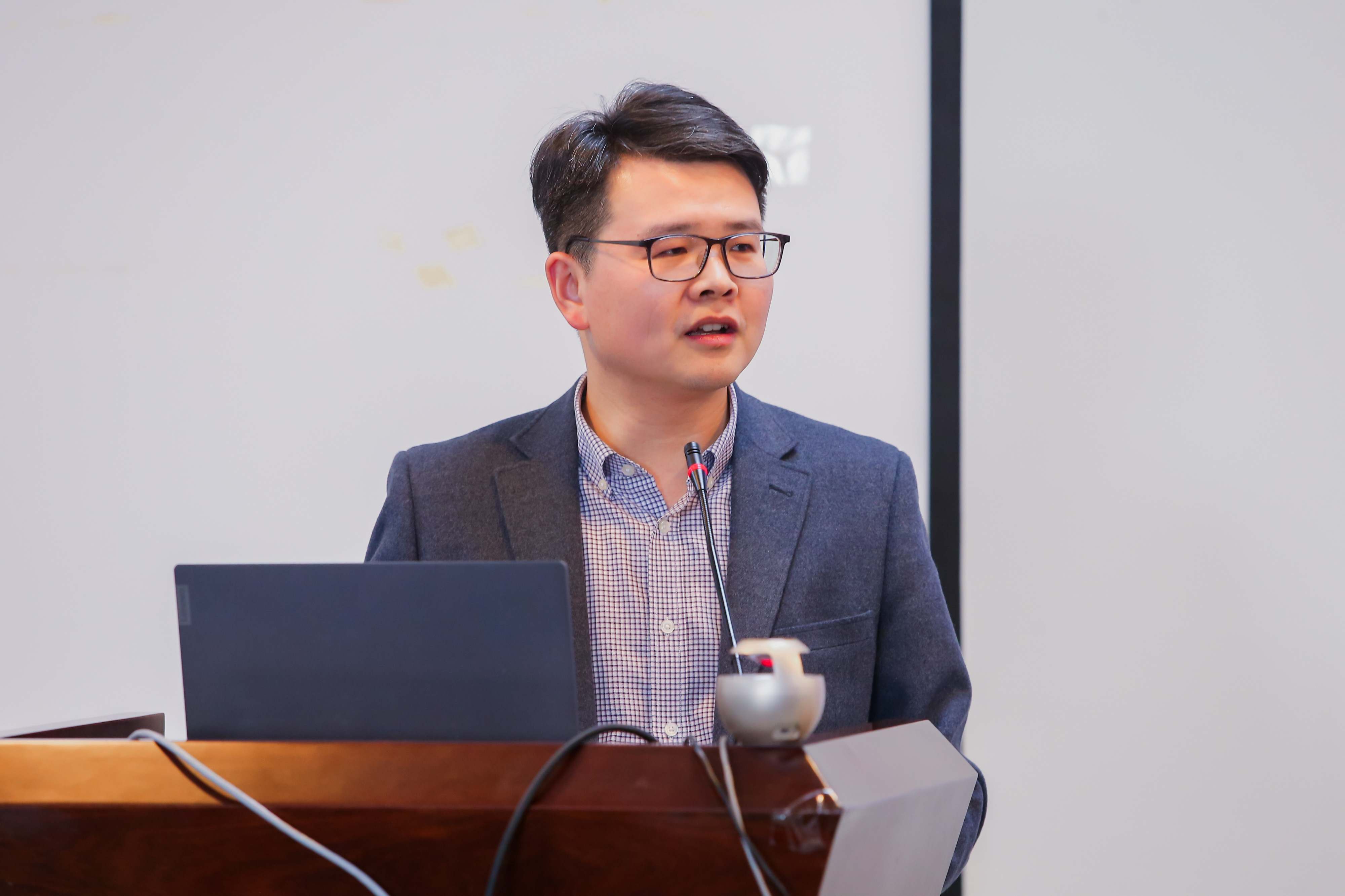
Researcher Ye Haifeng, East China Normal University
Ye Haifeng said that now it looks as simple as stacking blocks, but in fact every step of the ALICE system research is not easy. "How to express a cytokine? Is it efficient? Can it be secreted? Is the (antiviral) effect good? All these have to be tried. But the most difficult thing, I think, is the sensor itself. If the sensor does not work, or the effect It’s very poor, and if there is no later application value, it will hardly be effective. It has been delayed for quite a long time.”
Wang Yidan believes that the closest clinical application of the ALICE system may be for herpetic keratitis caused by HSV-1 virus. Because herpes virus can be latently infected, it is difficult to completely remove the virus with conventional virus drugs at present. However, if the ALICE system is made into eye drops and dropped on the cornea, the "latent" deployment of anti-virus can be achieved.
Ye Haifeng said, "This is my goal" to make an intelligent living drug like a cell robot. It is best to be able to take it orally. After eating, it can automatically monitor the physiological state. Algorithms, cellular robots capable of outputting drugs.
Ye Haifeng mentioned that in addition to clinical applications, he has already received consultations on the research and development of veterinary drugs, such as African swine fever, bird flu and other animal diseases.
According to previous reports from The Paper, Ye Haifeng’s research group reported a transgene expression control system regulated by far-red light in 2017, realizing the goal of remotely controlling the release of insulin from cells by smartphones to treat diabetes; in 2018, it reported the CRISPR regulated by far-red light -dCas9 endogenous gene transcription activation device (FACE), which can realize epigenetic manipulation and induce stem cells to differentiate into functional neural cells; in 2020, a split-Cas9 gene editing system (FAST) regulated by far-red light was reported, Oncogenes in mouse tumors can be edited; in early 2022, a new generation of ultra-sensitive optogenetic tool (REDMAP) was reported, which can lower blood sugar in diabetic mice as long as red light is irradiated for 1 minute.
Ye Haifeng said that the core essence is artificial design. Through design, artificially construct gene circuits, gene switches, and biosensors to finally achieve the goal.
Wang Yidan said, "It can be understood that we do programming in cells, edit various components in cells, and let them perform functions programmatically." "Design them on the computer, and then synthesize them. testing in cells."
She said that during the eight years of research on the ALICE system, she also worried that the paper would be robbed by others, so she checked the latest "circuits", components and designs published in the field of synthetic biology every day, and accelerated experiments.
Will you dare to meet such a challenge in the future?
Wang Yidan said, "I think it's definitely no problem. On the one hand, stick to the topics you like, and on the other hand, you should also do other topics with practical application value."